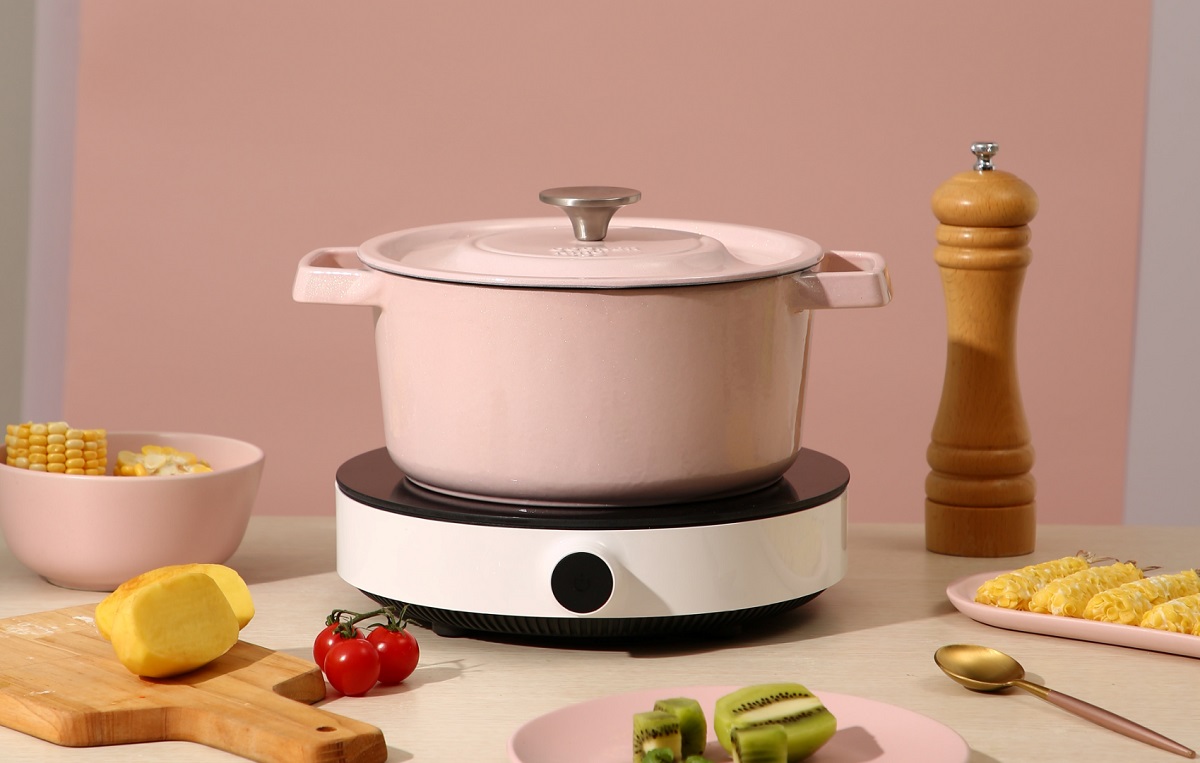

Articles
How To Use A Roaster Oven Like A Slow Cooker
Modified: February 29, 2024
Learn how to use a roaster oven as a slow cooker with these informative articles. Discover the tips and tricks to create delicious meals effortlessly.
(Many of the links in this article redirect to a specific reviewed product. Your purchase of these products through affiliate links helps to generate commission for Storables.com, at no extra cost. Learn more)
Introduction
Welcome to the world of cooking versatility! If you’re the proud owner of a roaster oven and have been wondering how to use it as a slow cooker, you’ve come to the right place. Roaster ovens are not just for roasting turkeys and large cuts of meat; they can also serve as a convenient and efficient alternative to a traditional slow cooker.
In this article, we will explore the ins and outs of using a roaster oven as a slow cooker. We’ll discuss what exactly a roaster oven is, highlight the differences between roaster ovens and slow cookers, and delve into the advantages of using a roaster oven for slow cooking. We’ll also provide you with step-by-step instructions on how to set up your roaster for slow cooking, as well as tips and tricks to help you achieve perfect slow-cooked meals every time. So, let’s get started!
Subtitle: What is a Roaster Oven?
Before we dive into how to use a roaster oven as a slow cooker, let’s clarify what a roaster oven actually is. A roaster oven is a countertop appliance that is specifically designed for cooking large cuts of meat, such as roasts, whole chickens, or turkeys. It typically features a removable cooking pan with a lid, which helps to trap heat and moisture during the cooking process.
One of the key advantages of a roaster oven is its large capacity. It can accommodate larger cuts of meat than a traditional slow cooker, making it ideal for feeding a crowd or preparing meals for special occasions. Roaster ovens often come with adjustable temperature controls, allowing you to cook your food at a precise temperature for optimal results.
Subtitle: Key Differences Between Roaster Oven and Slow Cooker
Now that we have a basic understanding of what a roaster oven is, let’s compare it to a slow cooker to understand the key differences between the two:
- Design: A roaster oven typically has a larger cooking capacity and features a removable cooking pan with a lid, while a slow cooker usually has a smaller capacity and utilizes a ceramic or stoneware insert.
- Temperature Control: Roaster ovens often offer adjustable temperature controls, allowing you to set specific cooking temperatures, whereas slow cookers usually have low, high, and sometimes medium heat settings.
- Cooking Time: Due to its larger size and higher temperature capabilities, a roaster oven generally cooks food faster than a slow cooker.
Subtitle: Advantages of Using a Roaster Oven as a Slow Cooker
Using a roaster oven as a slow cooker comes with several advantages:
- Capacity: The larger cooking capacity of a roaster oven compared to a slow cooker allows you to cook larger quantities of food, making it perfect for entertaining or batch cooking.
- Temperature Control: The adjustable temperature control on a roaster oven gives you more precise control over the cooking temperature, allowing you to achieve desired results.
- Efficiency: Roaster ovens typically distribute heat evenly, ensuring that your food cooks consistently throughout. This results in delicious, tender, and evenly cooked dishes.
Now that we’ve discussed the basics, let’s move on to the practical aspects of using a roaster oven as a slow cooker. Next, we’ll guide you through the setup process and explain how to adjust cooking times and temperatures for slow cooking in a roaster oven
Key Takeaways:
- Roaster ovens offer a versatile and efficient alternative to traditional slow cookers, providing larger capacity, precise temperature control, even cooking, and the ability to perform various cooking techniques.
- By utilizing a roaster oven as a slow cooker, you can enjoy the convenience, flexibility, and delicious results of slow-cooked meals, while also benefiting from its energy efficiency and easy cleanup.
Read more: How To Use Dutch Oven As Slow Cooker
What is a Roaster Oven?
A roaster oven is a versatile countertop appliance that is primarily designed for cooking large cuts of meat such as roasts, whole chickens, or turkeys. It consists of a sturdy metal housing with a heating element at the bottom, a removable cooking pan, and a lid. Roaster ovens are commonly used in households, catering events, and professional kitchens for roasting, baking, and slow cooking.
Unlike conventional ovens, roaster ovens are specifically designed to create an enclosed cooking environment that promotes even heat distribution and retains moisture. The cooking pan is typically made of durable materials like stainless steel or non-stick coated aluminum, which ensures efficient heat transfer and easy cleaning.
One of the notable features of a roaster oven is its large cooking capacity. Most models can easily accommodate a 20-pound turkey or even larger cuts of meat. This makes it an excellent choice for cooking for a crowd, hosting holiday feasts, and preparing meals for special occasions.
Roaster ovens also offer temperature controls that allow you to adjust the cooking temperature according to your recipe’s requirements. The temperature range can vary depending on the specific model, but it usually goes from around 150°F (65°C) to 450°F (232°C). This versatility enables you to use the roaster oven for various cooking techniques, including roasting, baking, steaming, and – as we will focus on in this article – slow cooking.
Many roaster ovens also come with additional features such as a removable rack for better air circulation, a self-basting lid to retain moisture, and a warming function to keep your food hot until ready to serve.
Roaster ovens offer several advantages over conventional ovens or slow cookers. Firstly, their portability allows you to easily transport the oven for outdoor events or potlucks. Secondly, their enclosed cooking environment helps to seal in the flavors and juices, resulting in succulent and tender meats. Additionally, roaster ovens are generally more energy-efficient than full-size ovens, as they use less electricity to reach and maintain the desired temperature.
Whether you’re looking to roast a delicious Sunday dinner, bake a batch of cookies, or slow cook a comforting stew, a roaster oven can be a valuable addition to your kitchen arsenal. So, let’s dive into the key differences between a roaster oven and a traditional slow cooker to explore their distinct uses and advantages.
Key Differences Between Roaster Oven and Slow Cooker
While roaster ovens and slow cookers share the common goal of cooking food at low temperatures over an extended period, there are some significant differences between the two appliances. Understanding these differences can help you choose the right appliance for your cooking needs. Let’s explore the key distinctions between a roaster oven and a slow cooker:
Size and Capacity:
A significant difference between a roaster oven and a slow cooker lies in their size and cooking capacity. Roaster ovens are generally larger and can accommodate larger cuts of meat or larger quantities of food. They are designed with the intention of cooking for a crowd or preparing meals for special occasions. On the other hand, slow cookers are usually smaller in size and are better suited for preparing meals for smaller households or for those who prefer smaller portions.
Design and Construction:
The design and construction of roaster ovens and slow cookers also differ. Roaster ovens typically feature a metal housing with a heating element at the bottom, a removable cooking pan, and a lid. Some roaster ovens come with additional features such as a removable rack or a self-basting lid. Slow cookers, on the other hand, are usually made of ceramic or stoneware materials and come with a removable cooking pot that sits inside an electric heating element. The lid of a slow cooker is usually made of glass or plastic to allow for easy monitoring of the cooking process.
Temperature Control:
Another key difference between roaster ovens and slow cookers is the level of temperature control they offer. Roaster ovens typically come with adjustable temperature controls that allow you to set specific cooking temperatures, similar to a conventional oven. This gives you more flexibility and control over the cooking process, allowing you to achieve desired results for different types of recipes. In contrast, slow cookers usually have low, high, and sometimes medium heat settings, which offer limited temperature control. Slow cookers are designed to cook at a consistent low temperature over a long period, which is ideal for slow-cooked dishes.
Cooking Time:
The cooking time for roaster ovens and slow cookers also varies. Due to its larger size and higher temperature capabilities, a roaster oven generally cooks food faster than a slow cooker. Roaster ovens are designed to work efficiently and can reduce cooking times compared to conventional ovens. Slow cookers, on the other hand, are specifically designed for long, slow cooking. They are intended to cook at a low and steady temperature for an extended period, allowing flavors to develop and ingredients to become tender.
Versatility:
When it comes to versatility, roaster ovens have the upper hand. Apart from slow cooking, roaster ovens can be used for a variety of cooking techniques such as roasting, baking, steaming, and even as a buffet server. They offer a wide range of temperature settings, making them suitable for different types of recipes. Slow cookers, while primarily designed for slow cooking, are limited in their versatility. However, they excel at creating tender and flavorful slow-cooked meals with minimal effort.
Now that you understand the key differences between roaster ovens and slow cookers, you can make an informed decision to choose the appliance that best suits your cooking needs. In the next section, we will explore the advantages of using a roaster oven as a slow cooker, unlocking its potential in creating delicious slow-cooked meals.
Advantages of Using a Roaster Oven as a Slow Cooker
Using a roaster oven as a slow cooker can offer several advantages over using a traditional slow cooker. Let’s take a look at some of the benefits:
Larger Capacity:
One of the main advantages of using a roaster oven as a slow cooker is its larger cooking capacity. Roaster ovens are designed to handle larger cuts of meat and can accommodate larger quantities of food compared to most traditional slow cookers. This makes them ideal for feeding a crowd, hosting parties, or preparing meals for special occasions. With a roaster oven, you can easily cook larger portions and have leftovers for future meals.
Precise Temperature Control:
Roaster ovens often come with adjustable temperature controls, which allow you to set specific cooking temperatures. This gives you more precision and control over the cooking process. Unlike slow cookers that typically have low, high, and sometimes medium heat settings, a roaster oven enables you to cook at a precise temperature that is best suited for your recipe. This flexibility ensures that your food is cooked to perfection, whether you’re making a tender pot roast or a flavorful stew.
Efficiency and Even Cooking:
Roaster ovens are known for their efficiency in distributing heat evenly. They are designed to create a uniform cooking environment, ensuring that your food cooks consistently throughout. This eliminates the need for constant stirring or turning of the food, allowing you to achieve excellent results with minimal effort. The even cooking provided by a roaster oven helps to develop rich flavors and tenderize the ingredients, resulting in delicious, succulent slow-cooked meals.
Versatility:
While a roaster oven can be used for slow cooking, it offers much more versatility compared to a traditional slow cooker. Roaster ovens can perform various cooking techniques such as roasting, baking, steaming, and even acting as a buffet server. They provide a wide range of temperature settings, allowing you to adapt to different recipes and culinary needs. This versatility makes a roaster oven a valuable addition to your kitchen, as it can serve multiple functions beyond just slow cooking.
Large Viewing Window:
Many roaster ovens come equipped with a large viewing window on the lid. This allows you to monitor the cooking process without lifting the lid and releasing heat. Being able to see the progress of your slow-cooked meal without disrupting the cooking environment is a convenient feature that ensures optimal results. It also enables you to visually inspect the doneness and texture of your food as it cooks, adding an extra level of control and precision to your cooking experience.
Efficient Energy Consumption:
Roaster ovens are generally more energy-efficient than large conventional ovens. With their smaller size and focused heating element, roaster ovens require less electricity to reach and maintain the desired cooking temperature. This means you can cook your slow-cooked meals without using excessive energy, helping to reduce your carbon footprint and save on utility costs.
By utilizing a roaster oven as a slow cooker, you can take advantage of its larger capacity, precise temperature control, even cooking, versatility, large viewing window, and energy efficiency. These advantages make roaster ovens a fantastic choice for those who enjoy the convenience of slow cooking but require the flexibility and capacity offered by a larger appliance. In the next section, we will guide you through the process of setting up your roaster oven for slow cooking to ensure delicious and successful results.
How to Properly Set Up a Roaster Oven for Slow Cooking
Setting up a roaster oven for slow cooking is fairly straightforward. By following these steps, you can ensure that your roaster oven is properly prepared to deliver delicious slow-cooked meals:
Step 1: Preheat the Roaster Oven:
Before placing your ingredients in the roaster oven, preheat it to the desired cooking temperature. This will ensure that the oven is at the correct temperature from the start and help maintain consistency throughout the cooking process. Refer to your roaster oven’s instruction manual for specific preheating instructions.
Step 2: Prepare the Cooking Pan:
Most roaster ovens come with a removable cooking pan that is either made of stainless steel or coated with a non-stick surface. Before adding your ingredients, lightly coat the cooking surface with cooking spray or olive oil to prevent sticking. This step will make it easier to clean the pan after cooking.
Step 3: Add the Ingredients:
Next, add your ingredients to the preheated cooking pan. Slow cooking is ideal for tough cuts of meat, root vegetables, and legumes, as the long, gentle cooking process helps to break down the fibers and create tender and flavorful dishes. Feel free to experiment with different flavor combinations and seasonings to suit your taste.
Step 4: Cover with the Lid:
Once your ingredients are in the cooking pan, cover it with the lid that came with your roaster oven. The lid helps to trap heat and moisture, creating a sealed cooking environment that helps to tenderize the food and enhance the flavors. Avoid opening the lid frequently during the cooking process, as this can cause heat loss and increase cooking time.
Step 5: Set the Temperature and Cooking Time:
Using the temperature controls on your roaster oven, set the desired cooking temperature for your slow-cooked recipe. Slow cookers typically operate at low temperatures ranging from 200°F (93°C) to 300°F (149°C). However, since roaster ovens offer more precise temperature control, consult your recipe or taste preference to determine the perfect temperature.
Additionally, set the cooking time based on your recipe’s instructions and the desired level of tenderness. Keep in mind that slow cooking requires longer cooking times compared to conventional methods. It is recommended to refer to specific slow cooker recipes and adapt the cooking times accordingly for your roaster oven.
Step 6: Monitor the Cooking Process:
While slow cooking, periodically check the progress of your dish through the large viewing window on the roaster oven’s lid. Avoid lifting the lid too often, as this can affect the cooking process by releasing heat and prolonging the cooking time. Use this opportunity to check the tenderness of the ingredients and adjust the cooking time if necessary.
Step 7: Let the Food Rest:
Once the cooking time is complete, turn off the roaster oven and let the food rest for a few minutes. Allowing the dish to rest helps to distribute the juices evenly and enhances the flavors. It also allows the food to cool slightly before serving.
By following these steps, you can properly set up your roaster oven for slow cooking and enjoy delicious, tender, and flavorful meals. In the next section, we will explore how to adjust cooking times and temperatures for slow cooking in a roaster oven, allowing you to achieve the best results every time!
When using a roaster oven as a slow cooker, make sure to adjust the temperature to the low setting and allow for a longer cooking time to achieve tender and flavorful results.
Read more: How To Use Slow Cooker Liners
Adjusting Cooking Times and Temperatures for Slow Cooking in a Roaster Oven
When using a roaster oven for slow cooking, it’s important to adjust the cooking times and temperatures to ensure optimal results. While roaster ovens offer precise temperature control, the cooking times for slow-cooked recipes may vary compared to a traditional slow cooker. Here are some guidelines to help you adjust these factors for successful slow cooking in a roaster oven:
Temperature Control:
Roaster ovens typically have adjustable temperature controls, allowing you to set specific cooking temperatures. Slow cookers usually operate at low temperatures between 200°F (93°C) to 300°F (149°C). However, roaster ovens offer more flexibility, so refer to your recipe or taste preference to determine the best temperature setting for your dish. Slow and steady cooking at a lower temperature allows the flavors to develop and the ingredients to become tender.
Cooking Time:
Slow cooking in a roaster oven may require adjustments to the cooking time compared to a traditional slow cooker. The higher heat capabilities of a roaster oven can result in faster cooking times. As a general rule of thumb, start with the cooking time recommended for a slow cooker recipe as a reference, but allow for a slightly shorter cooking time when using a roaster oven. Keep a close eye on your dish during the cooking process and use your judgment to determine the doneness of the ingredients.
Meat Cuts and Size:
The cut and size of the meat should also be taken into consideration when adjusting the cooking times and temperatures in a roaster oven. Tough cuts of meat, such as roasts or briskets, benefit from long, slow cooking to break down the connective tissues and become tender. For larger cuts of meat, increase the cooking time accordingly, while maintaining the recommended temperature. On the other hand, smaller cuts or pieces of meat may require shorter cooking times to prevent them from becoming overcooked and dry.
Moisture Levels:
Roaster ovens have a tight-fitting lid that helps retain moisture during cooking. However, depending on the recipe, you may need to adjust the moisture level by adding liquid to prevent the dish from drying out. Consider the recipe’s instructions and the desired consistency of the final dish. Some recipes may require additional liquid, such as broth or sauce, while others may call for a drier result. Adjust the amount of liquid according to the recipe or personal preference.
Periodic Monitoring:
While using a roaster oven for slow cooking, periodically monitor the progress of your dish through the large viewing window on the lid. Avoid lifting the lid too often, as this can affect the cooking process by releasing heat and extending the cooking time. Check the tenderness of the ingredients and adjust the cooking time or temperature if needed. Additionally, use this opportunity to stir the ingredients gently to ensure even cooking and distribution of flavors.
Recipe Adaptations:
It’s important to note that recipes specifically designed for slow cookers may require some adaptations when using a roaster oven. Take into account the higher heat capabilities and faster cooking times of the roaster oven. You may need to decrease the overall cooking time, adjust the temperature, or add additional liquid to compensate for the differences. Follow the recipe as a general guide and use your judgment to customize the cooking process based on the capabilities of your roaster oven.
By making these necessary adjustments to the cooking times, temperatures, moisture levels, and closely monitoring the progress of your dish, you can make the most out of using a roaster oven for slow cooking. The flexibility and control offered by roaster ovens allow you to achieve delicious and tender slow-cooked meals every time. In the next section, we will share some handy tips and tricks to help you maximize your experience of using a roaster oven as a slow cooker.
Tips and Tricks for Using a Roaster Oven as a Slow Cooker
Using a roaster oven as a slow cooker opens up a world of possibilities for delicious slow-cooked meals. To ensure the best results and make the most out of your roaster oven, here are some handy tips and tricks to keep in mind:
1. Choose the Right Size:
Consider the size of your roaster oven and the amount of food you plan to cook. Make sure the cooking pan is not overcrowded, as this can affect the heat distribution and result in uneven cooking. If you’re cooking smaller portions, use a smaller roaster oven or adjust the cooking time accordingly.
2. Brown Meat before Slow Cooking:
For optimal flavor and texture, consider browning the meat before placing it in the roaster oven. Browning helps to develop a rich crust and enhances the overall taste of the dish. Simply heat a skillet over medium-high heat, add a small amount of oil, and sear the meat on all sides until browned. Then transfer it to the roaster oven for slow cooking.
3. Utilize the Removable Rack:
If your roaster oven comes with a removable rack, utilize it for better air circulation during cooking. The rack helps to elevate the meat or other ingredients, allowing hot air to circulate evenly and ensure even cooking. It also helps to prevent the food from sitting in its own juices, resulting in a more desirable texture.
4. Enhance Flavors with Herbs and Aromatics:
Add depth and complexity to your slow-cooked dishes by incorporating herbs, spices, and aromatics. Fresh or dried herbs like rosemary, thyme, or bay leaves can infuse delightful flavors into your meals. Consider adding garlic, onions, or other aromatics to enhance the overall taste and aroma of your dish.
5. Allow Time for Resting:
After slow cooking in the roaster oven, let the dish rest for a few minutes before serving. This allows the flavors to meld together and the juices to redistribute, resulting in a more tender and flavorful final product. It also helps to cool the dish slightly, making it safer to handle and easier to portion.
6. Experiment with Recipes:
Don’t be afraid to get creative and try new recipes in your roaster oven. Slow cooking opens up a wide range of possibilities, from hearty stews and braised meats to flavorful soups and casseroles. Explore different cuisines, flavors, and ingredients to find your favorite slow-cooked dishes that shine in the roaster oven.
7. Use the Warming Function:
If your roaster oven has a warming function, take advantage of it to keep your slow-cooked meals hot and ready to serve. Once the cooking time is complete, you can switch the roaster oven to the warming setting, allowing your food to stay at a safe temperature until you’re ready to enjoy it.
8. Keep the Lid Closed:
Avoid the temptation to lift the lid of the roaster oven too frequently during the cooking process. Opening the lid releases heat and can significantly impact the cooking time and temperature. Try to resist the urge to peek and trust that the roaster oven is creating a perfect cooking environment for your slow-cooked masterpiece.
9. Clean and Maintain Regularly:
Proper cleaning and maintenance of your roaster oven are essential for its longevity and performance. Make sure to follow the manufacturer’s instructions for cleaning and storing the roaster oven. Remove any food residue, grease, and stains after each use to keep the appliance in good condition.
10. Enjoy the Versatility:
Remember that your roaster oven can do more than just slow cooking. Take advantage of its versatility by exploring other cooking functions like roasting, baking, or steaming. Embrace the convenience and flexibility that your roaster oven brings to your kitchen.
With these tips and tricks in mind, you can confidently use your roaster oven as a slow cooker and create mouthwatering, slow-cooked dishes that will impress your family and friends. Enjoy the convenience and deliciousness that comes with slow cooking in a roaster oven!
Cleaning and Maintenance of a Roaster Oven Used as a Slow Cooker
Proper cleaning and maintenance of your roaster oven are crucial to ensure its longevity and to keep it in optimal working condition. Here are some essential tips for cleaning and maintaining a roaster oven when used as a slow cooker:
1. Unplug and Allow to Cool:
Before cleaning your roaster oven, always unplug it from the power source and allow it to cool completely. Cleaning a hot or warm roaster oven can be dangerous and may cause burns.
2. Remove and Wash Removable Parts:
If your roaster oven has removable parts, such as the cooking pan, lid, and rack, carefully remove them for cleaning. Wash these parts with warm, soapy water using a sponge or dishcloth. Avoid using abrasive cleaners or scrub brushes that can damage the surfaces. Rinse thoroughly with clean water and allow them to dry completely before reassembling.
3. Clean the Interior:
To clean the interior of the roaster oven, wipe it down with a damp cloth or sponge. Use a mild dish soap if needed, and make sure to remove any food particles or residue. Avoid submerging the roaster oven in water or pouring liquids directly into it, as it may damage the electrical components.
4. Cleaning Stubborn Stains:
If you encounter stubborn stains on the interior or exterior of the roaster oven, you can create a paste using baking soda and water. Apply the paste to the stains, let it sit for a few minutes, and then gently scrub with a non-abrasive sponge or cloth. Rinse thoroughly with clean water and dry completely.
5. Dealing with Grease and Oil:
If your roaster oven has accumulated grease or oil, use a mild degreasing dish soap or a mixture of equal parts vinegar and water to break down the grease. Apply the soap or vinegar solution to a sponge or cloth and wipe down the greasy areas. Rinse with clean water and dry thoroughly.
6. External Cleaning:
Clean the exterior of the roaster oven with a damp cloth or sponge. Avoid using abrasive cleaners, as they can scratch or damage the surface. Dry the exterior thoroughly to prevent water spots or corrosion.
7. Store Properly:
After cleaning and drying your roaster oven, store it in a clean and dry place. Make sure the cord is neatly wrapped and secured. Avoid storing it in areas with high humidity or extreme temperatures, as this can affect the appliance’s performance and lifespan.
8. Regular Maintenance:
Regularly inspect and maintain your roaster oven to keep it in good working condition. Check the cord for any signs of damage and promptly replace it if necessary. Clean the ventilation openings to prevent any blockage or airflow restrictions. Refer to the manufacturer’s instructions for any specific maintenance recommendations.
9. Use Liners for Easy Cleanup:
Consider using liners specifically designed for roaster ovens to make the cleaning process easier. These liners can be placed inside the cooking pan before adding your ingredients. They help to minimize food residue and make cleanup a breeze. Just remember to remove the liner before storing or reheating leftovers.
10. Follow Manufacturer’s Instructions:
Always refer to the manufacturer’s instructions for specific cleaning and maintenance guidelines for your roaster oven. Different models may have specific requirements, and it’s important to follow them to ensure the appliance’s safety and longevity.
By following these cleaning and maintenance tips, you can keep your roaster oven used as a slow cooker in top condition. Regular cleaning and proper care will ensure that your roaster oven continues to provide delicious and reliable slow-cooked meals for years to come.
Remember, safety should always be a priority when cleaning any electrical appliance. If you are unsure or have specific concerns, consult the manufacturer’s instructions or contact customer support for guidance.
Frequently Asked Questions (FAQs)
Here are answers to some common questions about using a roaster oven as a slow cooker:
Q: Can I use my roaster oven as a slow cooker?
A: Yes, you can! Roaster ovens can serve as a great alternative to traditional slow cookers. With their larger capacity and adjustable temperature controls, they offer more versatility and convenience for slow cooking.
Q: What temperature should I set my roaster oven for slow cooking?
A: The temperature you set will depend on your recipe and personal preference. Slow cookers typically operate at low temperatures ranging from 200°F (93°C) to 300°F (149°C). Roaster ovens offer more precise temperature control, so consult your recipe or adjust according to your desired outcome.
Q: Can I use my roaster oven to cook other dishes besides slow-cooked meals?
A: Absolutely! Roaster ovens are versatile appliances that can be used for roasting, baking, steaming, and even as buffet servers. They offer a wide range of temperature settings, making them suitable for various cooking techniques.
Q: Can I adjust cooking times for slow cooking in a roaster oven?
A: Yes, it’s important to adjust cooking times when using a roaster oven. Due to the roaster oven’s higher heat capabilities, cooking times may be shorter compared to a traditional slow cooker. Start with the recommended slow cooker cooking time and use your judgment to determine the doneness of the dish.
Q: How do I clean my roaster oven after using it as a slow cooker?
A: It’s important to unplug the roaster oven and allow it to cool completely before cleaning. Remove any removable parts, such as the cooking pan and lid, and wash them with warm, soapy water. Wipe down the interior and exterior of the roaster oven with a damp cloth or sponge. Avoid submerging the roaster oven in water or pouring liquids directly into it.
Q: Can I use liners in my roaster oven for easier cleanup?
A: Yes, there are liners specifically designed for roaster ovens that can make cleanup easier. These liners can be placed inside the cooking pan before adding your ingredients. They help to minimize food residue and can be removed for disposal after use.
Q: How should I store my roaster oven when not in use?
A: After cleaning and drying the roaster oven, store it in a clean and dry place. Avoid storing it in areas with high humidity or extreme temperatures. Ensure that the cord is neatly wrapped and secured.
These are just a few of the commonly asked questions about using a roaster oven as a slow cooker. For more specific queries or concerns, consult the manufacturer’s instructions or reach out to their customer support for further assistance.
Read more: How To Use Ninja Foodi As Slow Cooker
Conclusion
Using a roaster oven as a slow cooker can be a game-changer in your kitchen. The versatility, larger capacity, and precise temperature control offered by a roaster oven make it a fantastic alternative to a traditional slow cooker. Whether you’re cooking for a crowd or looking to add convenience to your meal preparation, a roaster oven can deliver flavorful, tender, and delicious slow-cooked meals with ease.
In this article, we covered the basics of roaster ovens and highlighted the key differences between roaster ovens and slow cookers. We explored the advantages of using a roaster oven for slow cooking, including larger capacity, precise temperature control, even cooking, and versatility. We also provided step-by-step instructions on setting up your roaster oven for slow cooking and discussed how to adjust cooking times and temperatures for the best results.
Furthermore, we shared useful tips and tricks for making the most out of your roaster oven as a slow cooker. From browning meat before slow cooking to experimenting with recipes and utilizing the warming function, these tips can help you elevate your slow-cooked dishes to perfection.
Lastly, we addressed common FAQs regarding using a roaster oven as a slow cooker, addressing concerns about temperature settings, cleaning and maintenance, and the use of liners.
In conclusion, a roaster oven can be a valuable addition to your kitchen arsenal. Its ability to function as a slow cooker opens up a world of possibilities for creating delicious meals with ease. Whether you’re cooking for a family dinner or hosting a gathering, a roaster oven can help you achieve mouthwatering slow-cooked dishes that will impress your loved ones. So, go ahead and unleash the full potential of your roaster oven as a slow cooker, and enjoy the convenience, versatility, and incredible flavors it brings to your culinary adventures!
Frequently Asked Questions about How To Use A Roaster Oven Like A Slow Cooker
Was this page helpful?
At Storables.com, we guarantee accurate and reliable information. Our content, validated by Expert Board Contributors, is crafted following stringent Editorial Policies. We're committed to providing you with well-researched, expert-backed insights for all your informational needs.
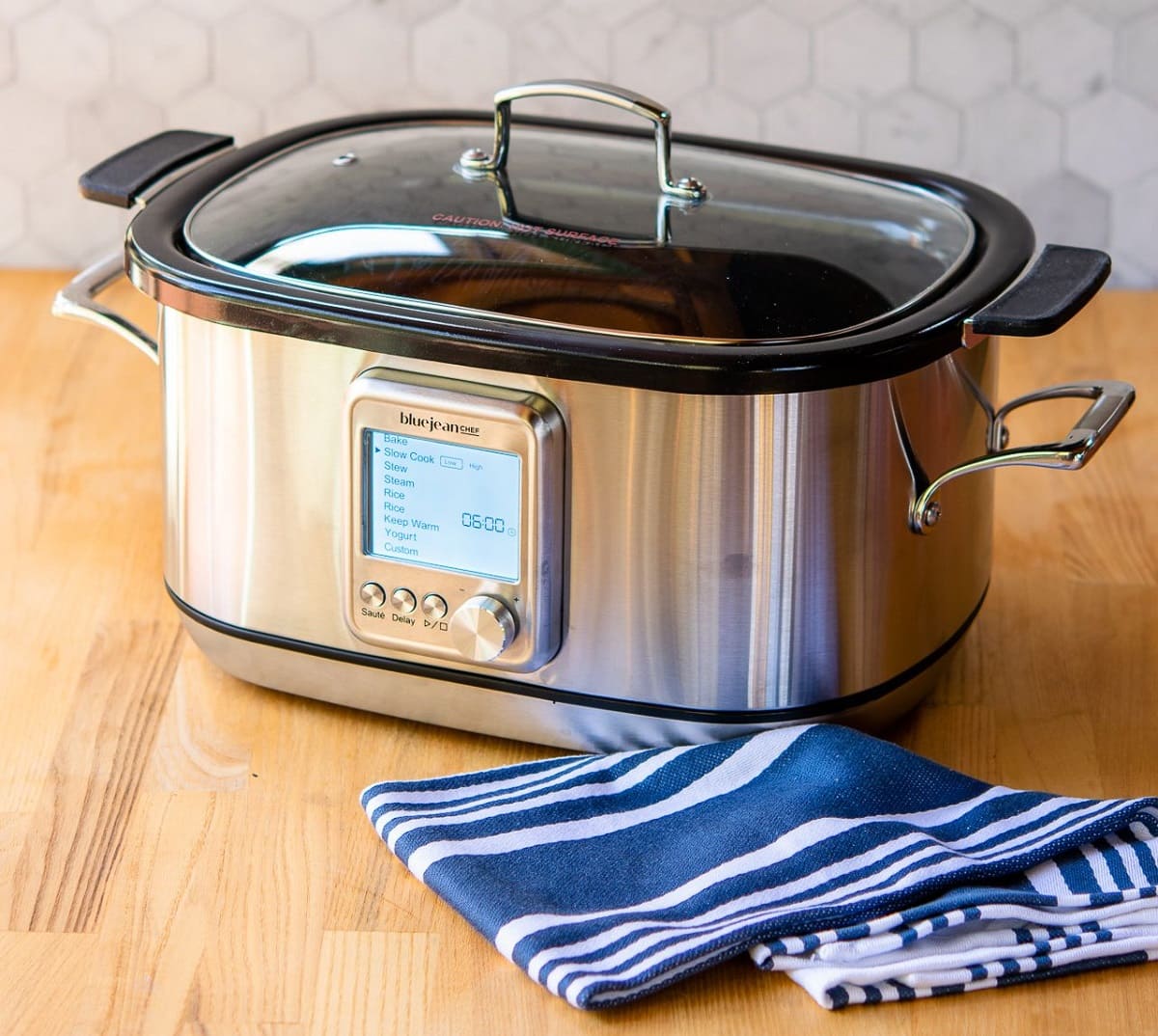
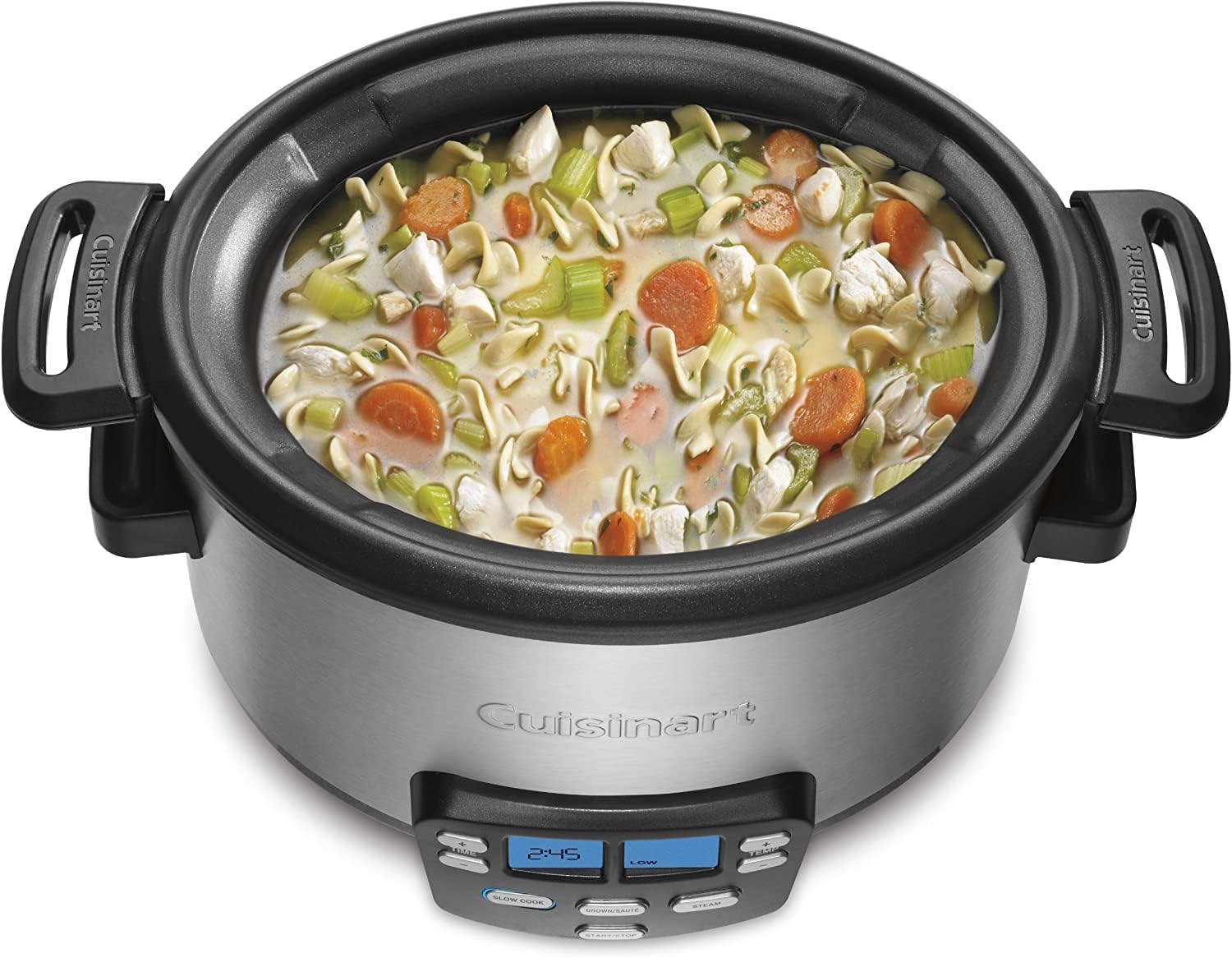
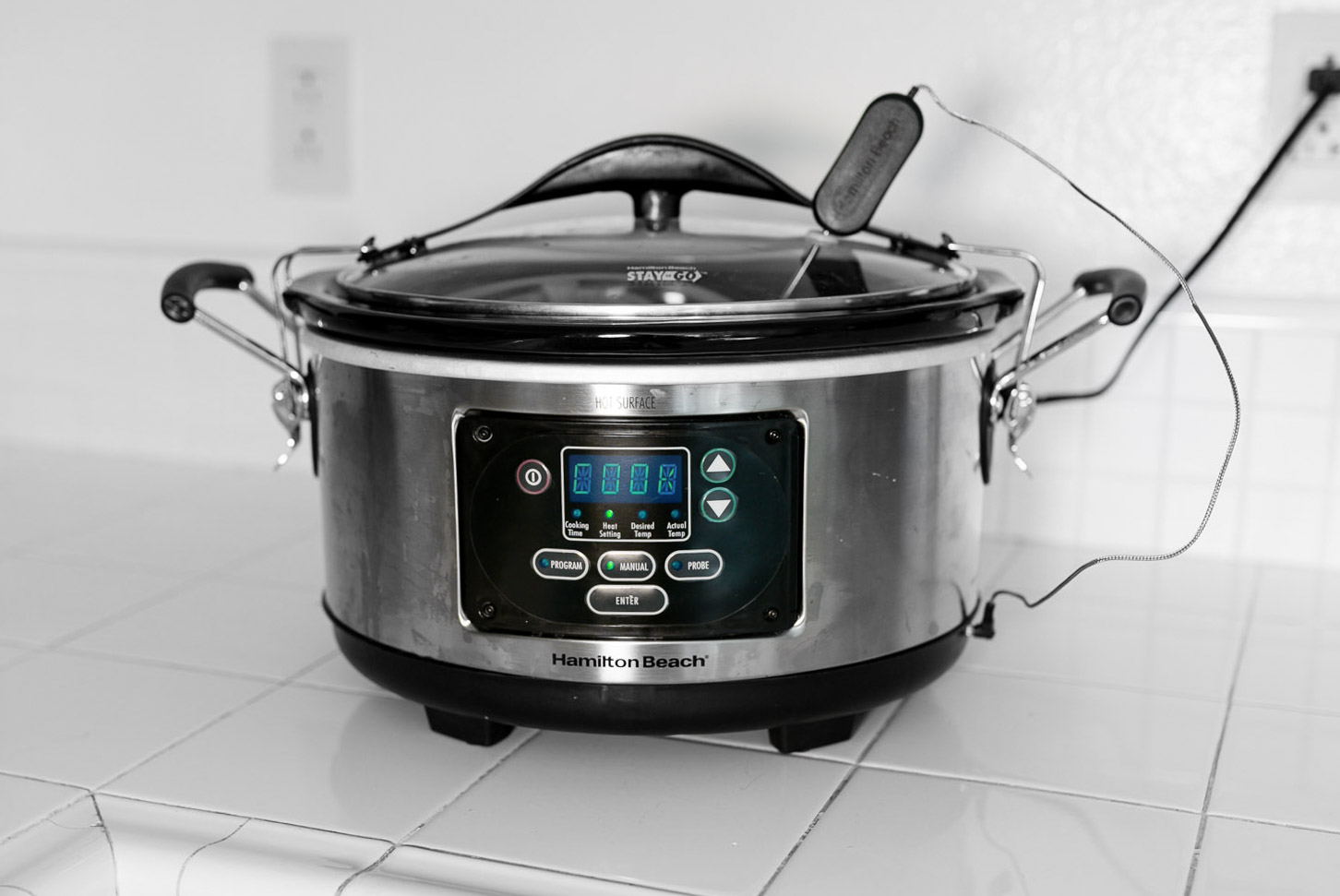
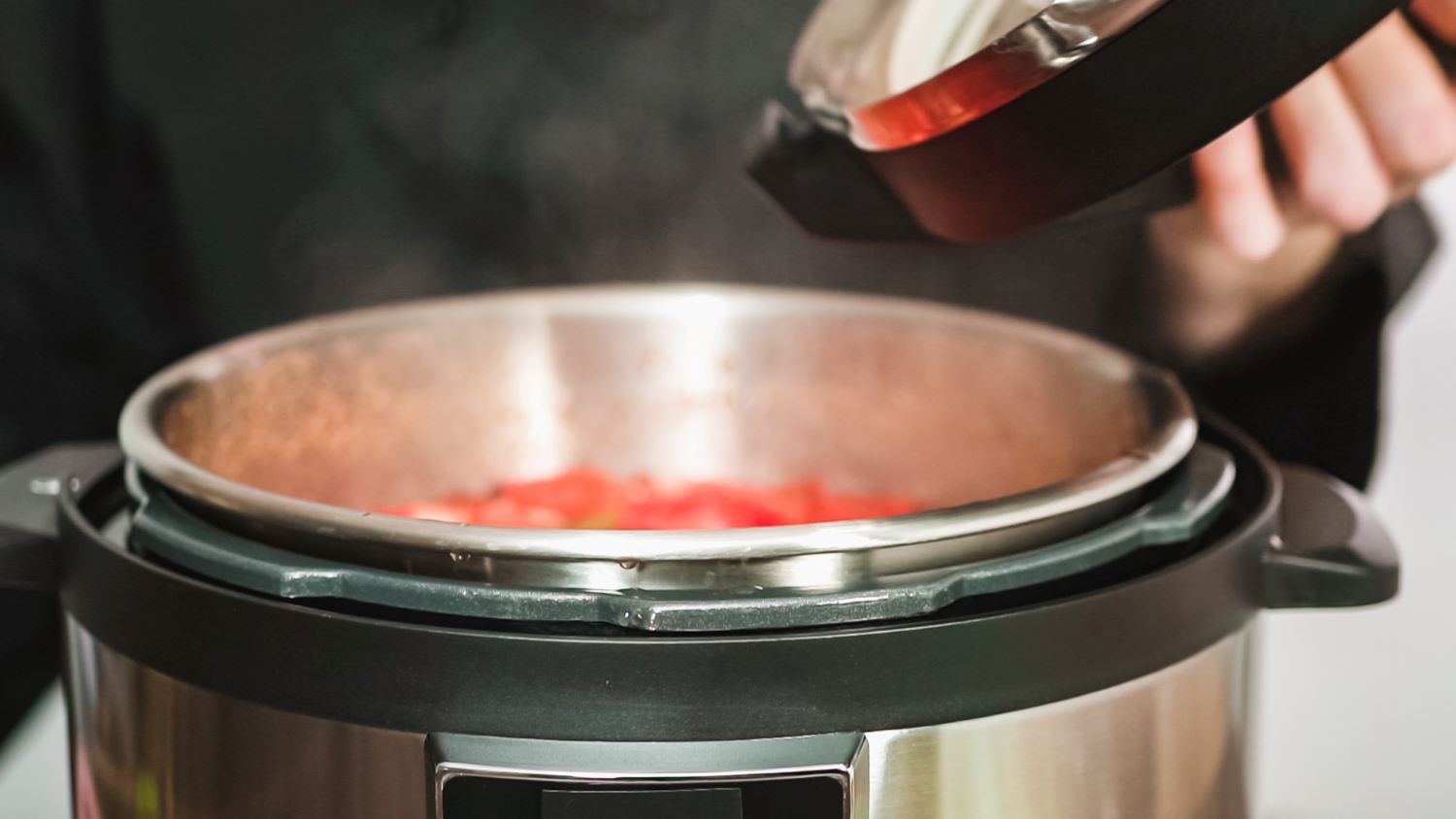
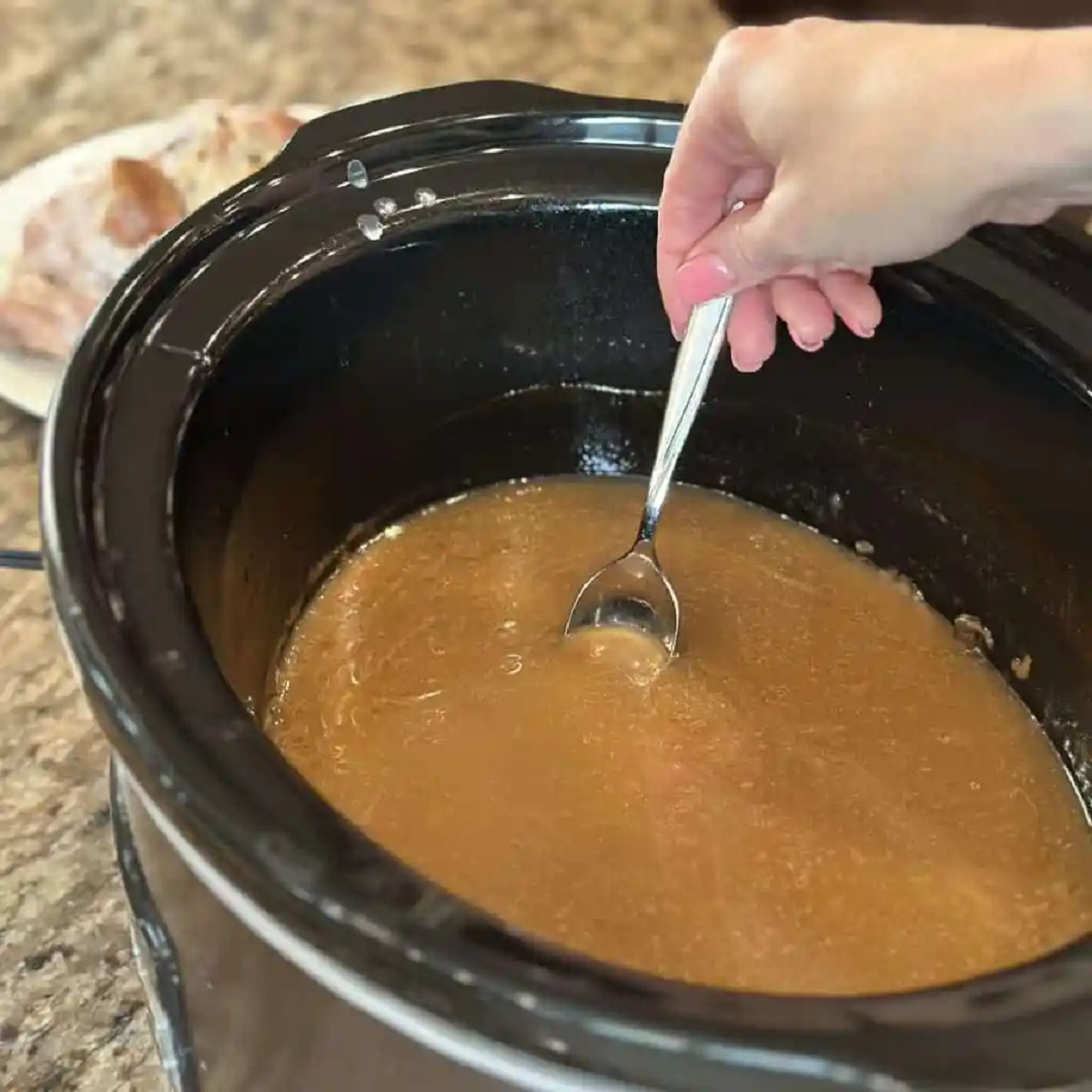

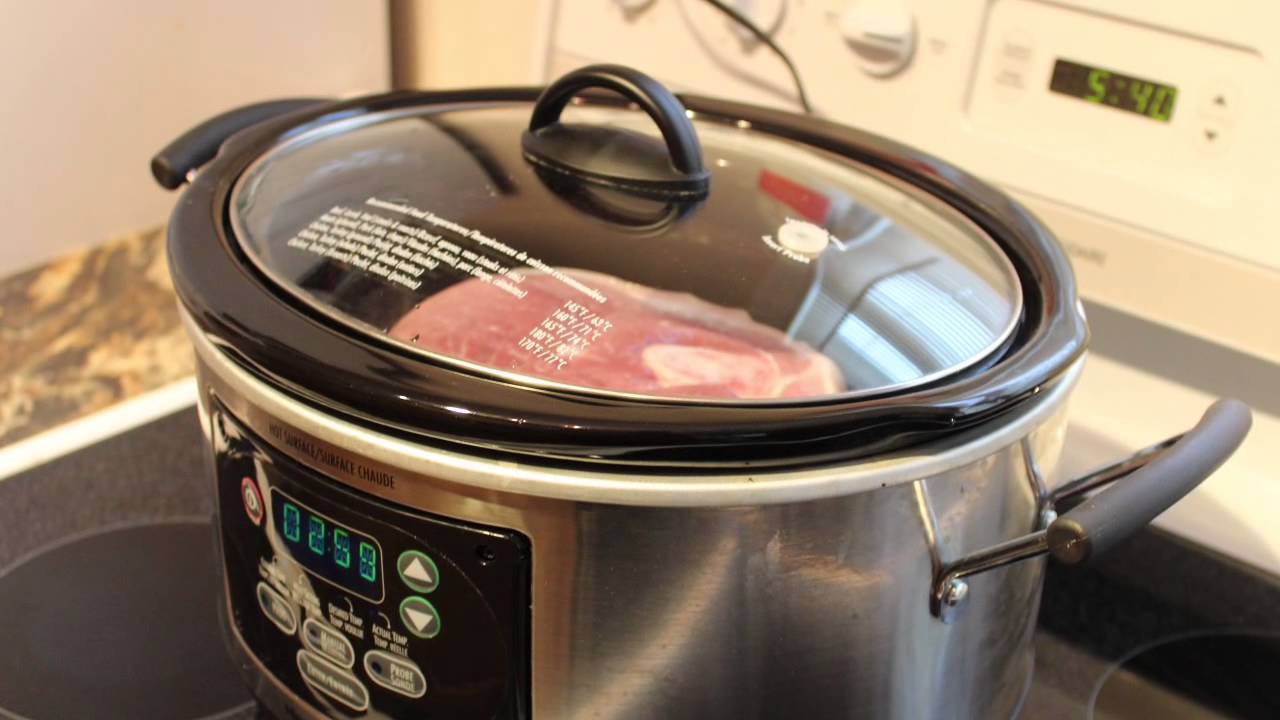
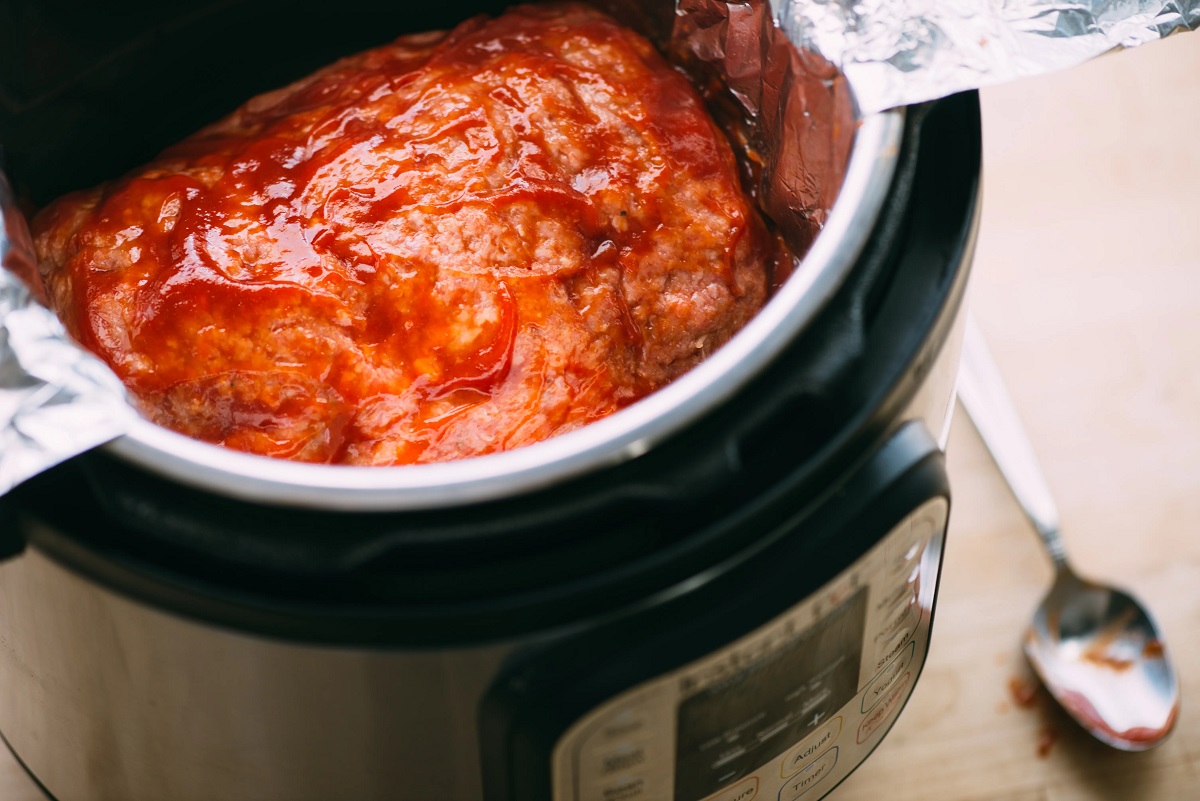
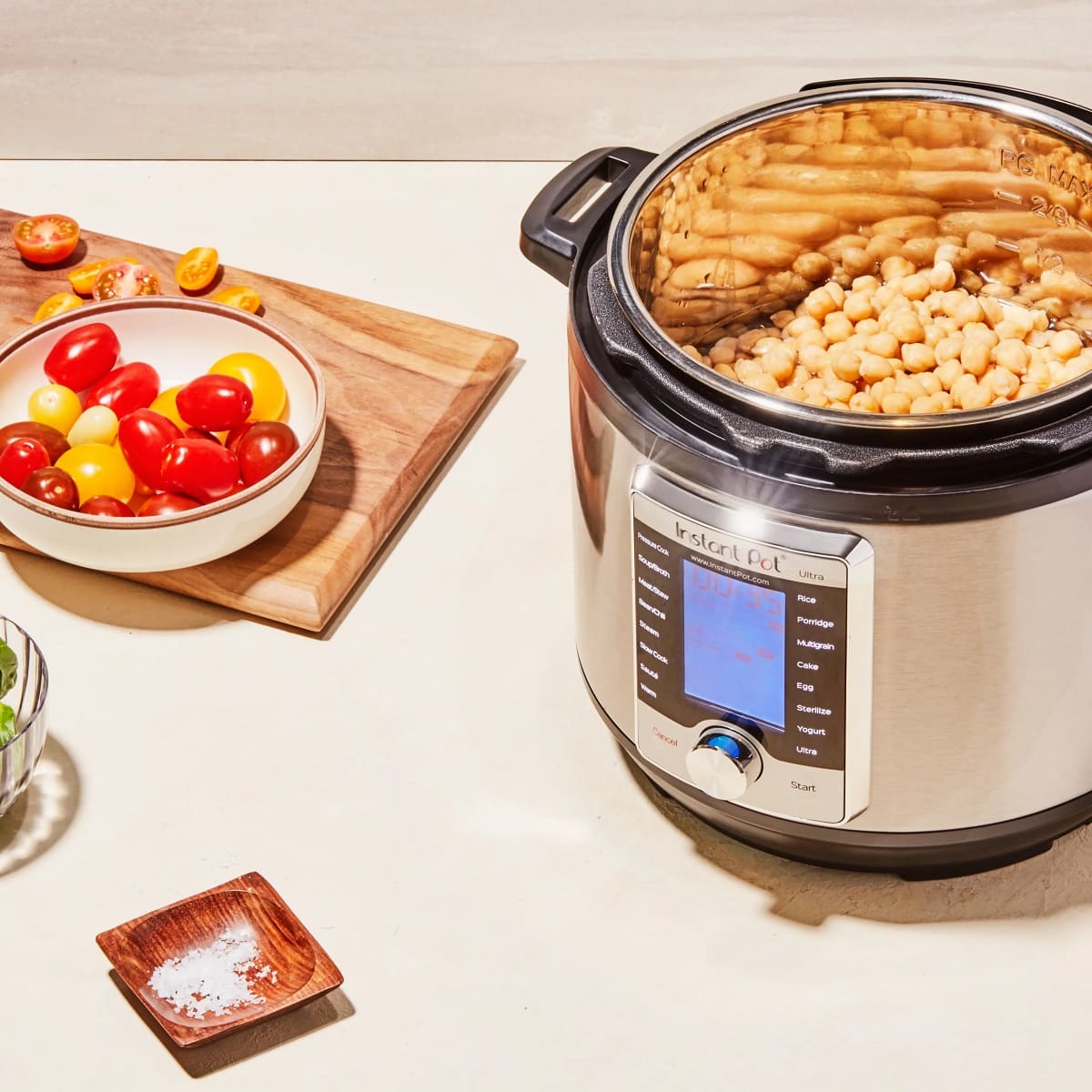
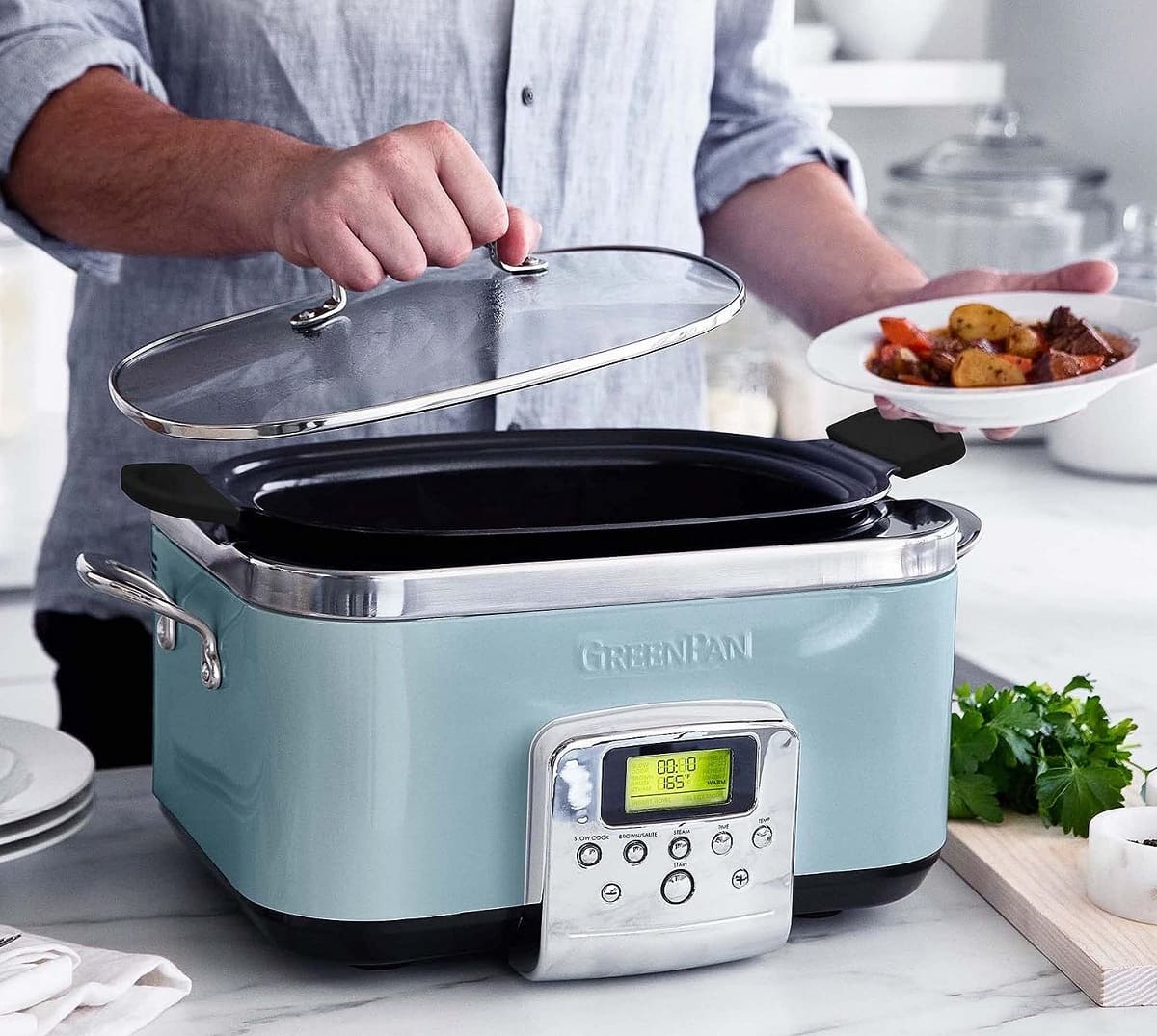
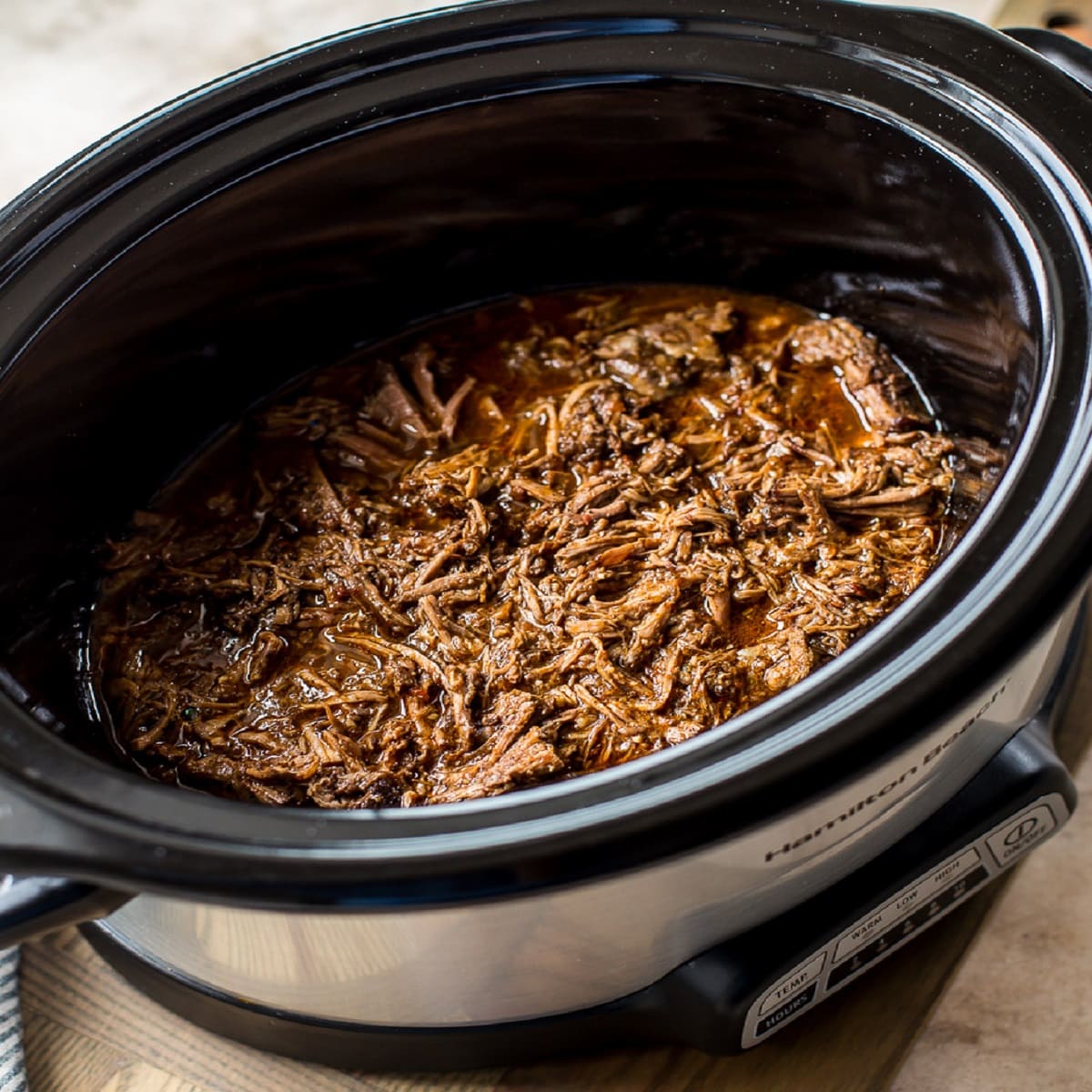
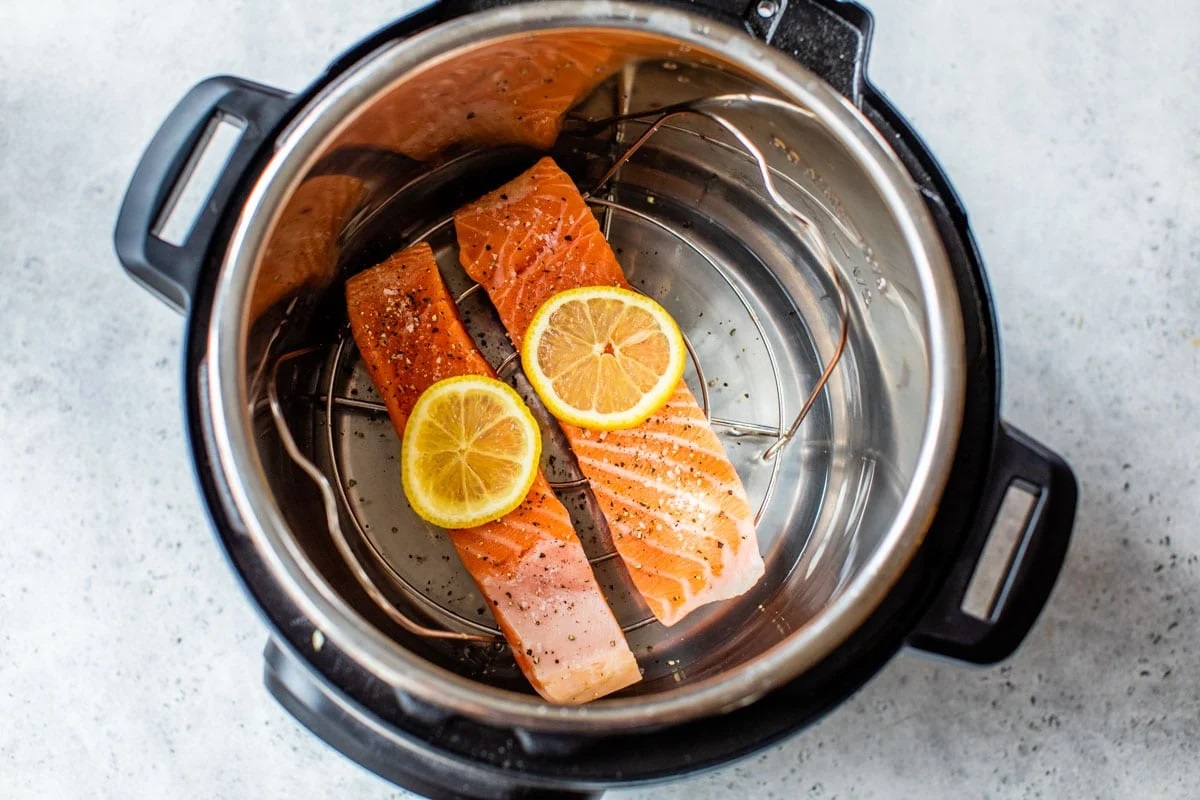
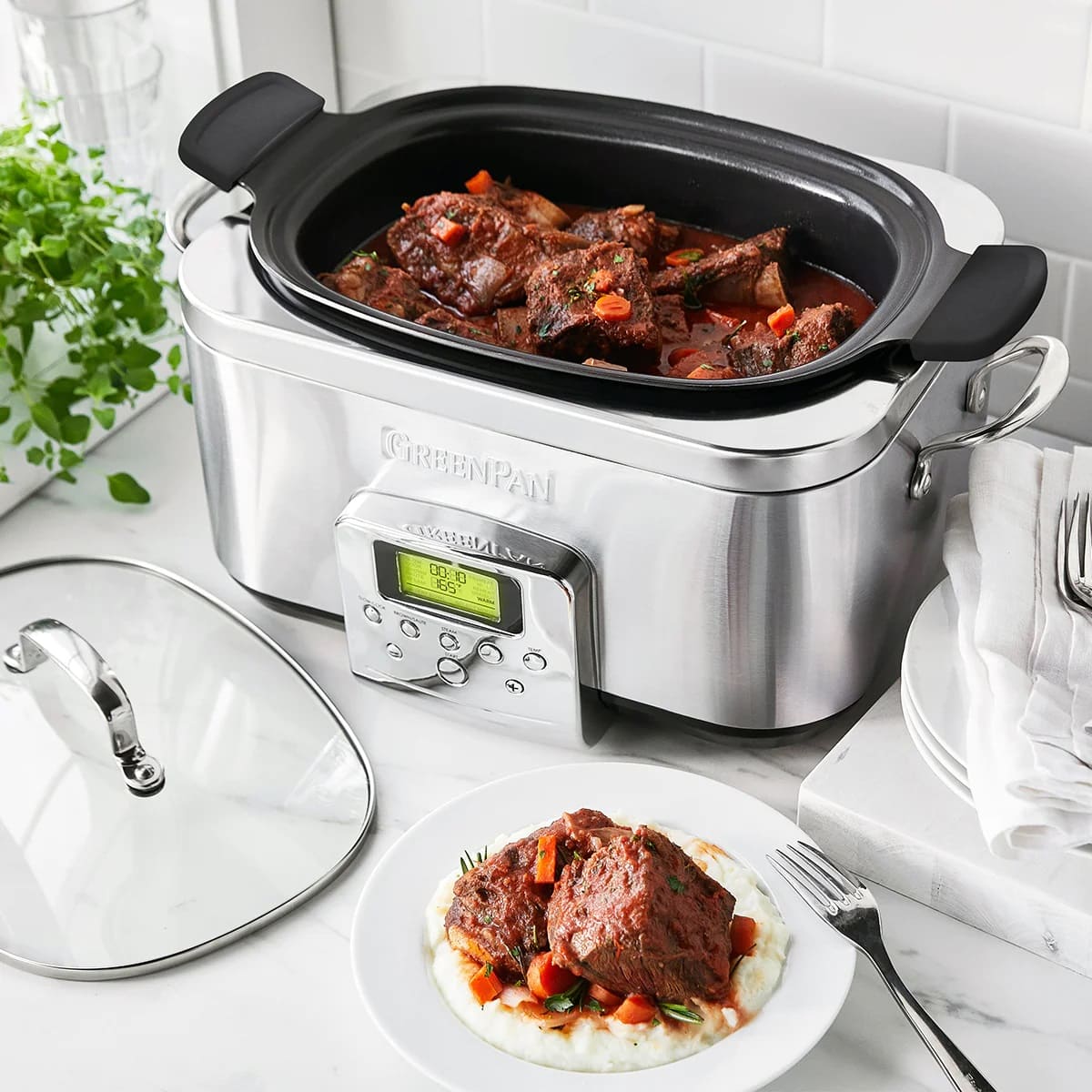

0 thoughts on “How To Use A Roaster Oven Like A Slow Cooker”